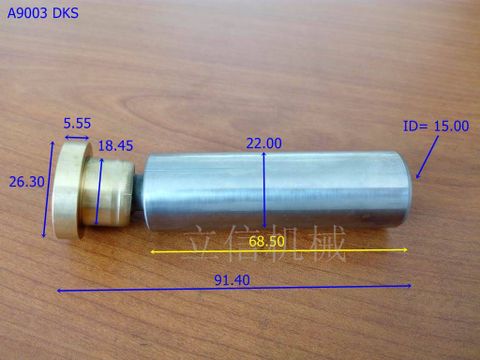
Main Pump , Travel Motor, Swing Motor Piston or Plunger
Last Update
Price:
R.F.Q.
Share Product:
Detail
Function of Plungers in Hydraulic Pumps
Fluid Displacement:
- Primary Role: Plungers are responsible for displacing hydraulic fluid within the pump's chambers.
- Reciprocating Motion: Plungers move back and forth within cylinders or barrels, alternately drawing in and pushing out hydraulic fluid.
Creating Pressure:
- Pressure Generation: As plungers reciprocate, they create pressure within the pump chambers.
- Compression: During the compression stroke, plungers compress the hydraulic fluid, increasing its pressure and energy.
Flow Control:
- Volume Regulation: Plungers help regulate the volume of hydraulic fluid pumped by controlling the stroke length and frequency.
- Flow Direction: The reciprocating motion of plungers determines the direction of fluid flow within the pump, allowing for precise control over hydraulic system operation.
Efficiency Optimization:
- Stroke Optimization: Plungers are designed to optimize stroke length and frequency for maximum pump efficiency.
- Energy Conversion: They efficiently convert mechanical energy into hydraulic energy, minimizing energy losses and maximizing pump performance.
Sealing Function:
- Fluid Containment: Plungers create a seal against the cylinder or barrel walls, preventing hydraulic fluid from leaking past them.
- Seal Integrity: Proper sealing ensures that the pump maintains the necessary pressure levels and prevents fluid leakage, ensuring efficient operation.
Durability and Reliability:
- Material Strength: Plungers are typically made from high-strength materials to withstand the stresses of reciprocating motion and high-pressure operation.
- Wear Resistance: They are designed to resist wear and corrosion, ensuring long-term durability and reliability of the pump.
Importance in Hydraulic Pump Performance
Plungers are essential for the reliable and efficient operation of reciprocating hydraulic pumps. Their functions in fluid displacement, pressure generation, flow control, efficiency optimization, sealing, durability, and reliability contribute to the overall performance, longevity, and safety of the pump and the hydraulic system.
Maintenance and Care
- Regular Inspection: Periodically inspect plungers for signs of wear, damage, or improper sealing. Replace worn or damaged plungers promptly to prevent fluid leakage and maintain pump performance.
- Lubrication: Ensure proper lubrication of plungers and cylinder/barrel surfaces to reduce friction and wear, prolonging the lifespan of pump components.
- Seal Replacement: Replace seals as needed to maintain proper sealing integrity and prevent fluid leakage.
- Operational Checks: Monitor pump performance and efficiency to detect any abnormalities that may indicate plunger-related issues.
Summary
In summary, plungers in hydraulic pumps are essential for:
- Displacing hydraulic fluid and generating pressure
- Controlling fluid flow and volume
- Optimizing pump efficiency and energy conversion
- Providing sealing against fluid leakage
- Ensuring durability and reliability of pump operation
Proper maintenance and care of plungers are crucial to ensure the optimal performance, efficiency, and longevity of reciprocating hydraulic pumps and the overall hydraulic system.
Specification
| Keyword | |
| Brand | |
| Origin | MY |
Catalogue Download